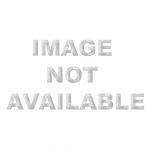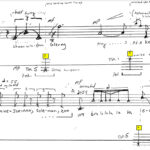Zack Settel, Cort Lippe: Gandy Bridge
Title:
- Gandy Bridge
Artist(s) and People Involved:
Performers:
Symposium:
- ISEA94: Fifth International Symposium on Electronic Art
-
More artworks from ISEA94:


Artist Statement:
Gandy Bridge is an electronic music-theater piece featuring two performers and computer-coordinated signal processing and synthesis. The title of the piece was chosen by the authors, who visited the Gandy Bridge separately, as a focal point for the piece, combining their independent experiences and impressions of their visits. In this piece, the role of the electronics is to enhance and/or augment the text material spoken/sung by the performers, allowing for a wide range of expression on both dramatic and sonic levels. The electronics depend entirely on the performer’s live input (real-time interactive performance), which can be combined in the computer to form one or more “sonic” objects, blending characteristics of the input signals (each performer’s input). Technics such as musical feature extraction and “audio-morphing” allow the performers to enter into a multi-level dialog with each other and/or the electronics, incorporating text material and timbre. For example, in one section of the piece, a new reading of the text material rendered by combining both performers’ readings of the text, where one performer’s voice inflection is projected onto the other performer’s articulation of the text.
The dramatic setting of the piece is minimalist and emphasizes gesture and sound: each performer is dressed in black and equipped with only a chair, microphone and a foot-pedal; the lighting is singular (one focal point and low ambient lighting) and invariant. The text for the piece is a compilation of various texts chosen for their semantic and phonetic qualities. On a technical level, the electronics for the piece provide signal processing and synthesis, including FFT/IFFT analysis/resynthesis, audio-morphing, harmonizers, live sampling, delay lines and FM (Frequency Modulation) synthesis – all of which are dynamically controlled by the performers.
Effort has been made to integrate the control of the electronics in a way that takes advantage of the player’s audio input (spoken/sung text material). Using musical feature extraction, the performers are able to control the electronics with the use of their voices. The duration of the work ranges from eight to twelve minutes.
Category:
All Works by the Performer(s) in This Archive:
- Zack Settel
- More Art Events from Zack Settel in this archive:

Gandy Bridge
[ISEA94]
Eshroade Piepel
[SISEA]
Hok Pwah
[FISEA'93]- Cort Lippe
- More Art Events from Cort Lippe in this archive:

Gandy Bridge
[ISEA94]
Music for Bass Clarinet and Tape
[FISEA]





